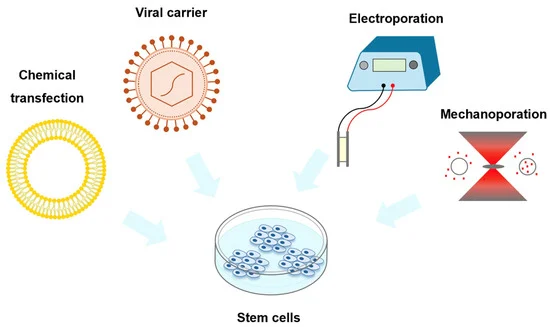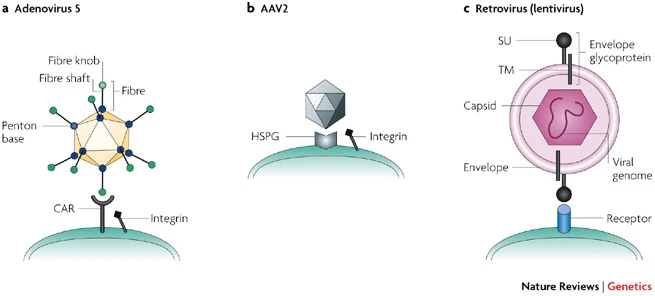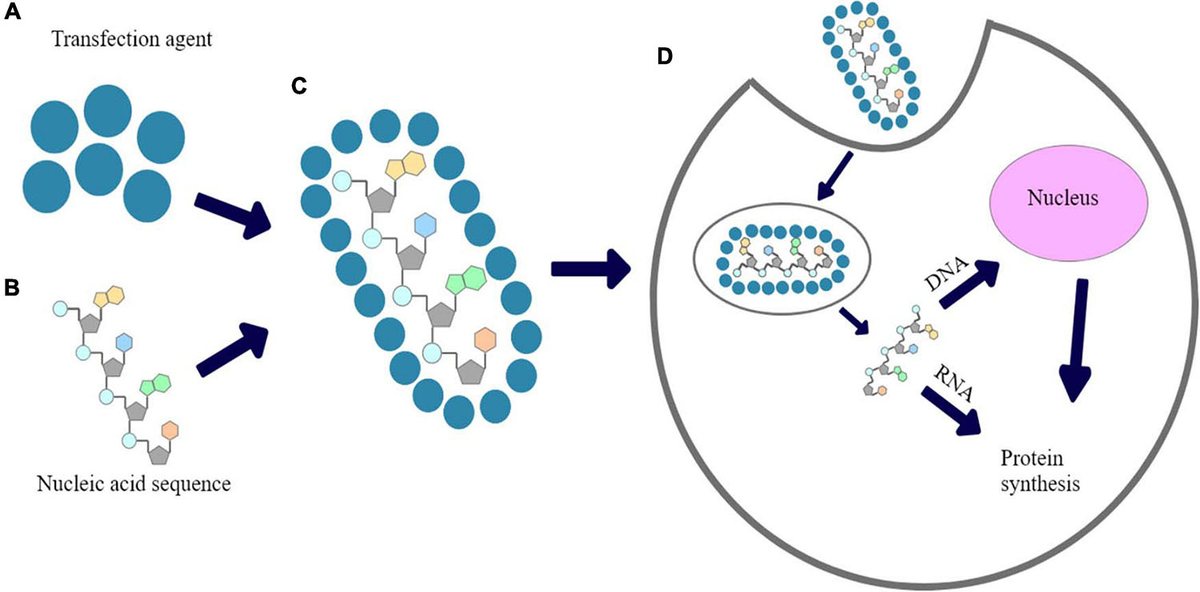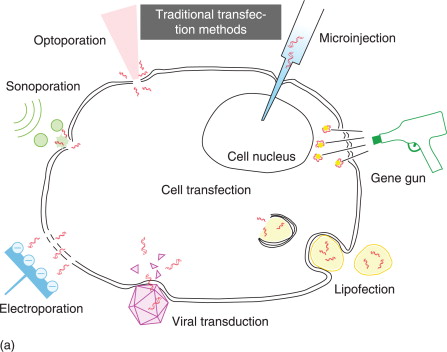Introduction
Transfection is a key laboratory technique used to investigate gene function, protein expression, and cellular processes. It has broad applications across fields such as biomedical research, drug discovery, and nucleic acid delivery studies.
Transfection methods vary based on how genetic material is introduced into cells, each offering unique advantages depending on cell type and experimental needs. These methods are broadly classified into three categories:

Type of transfaction
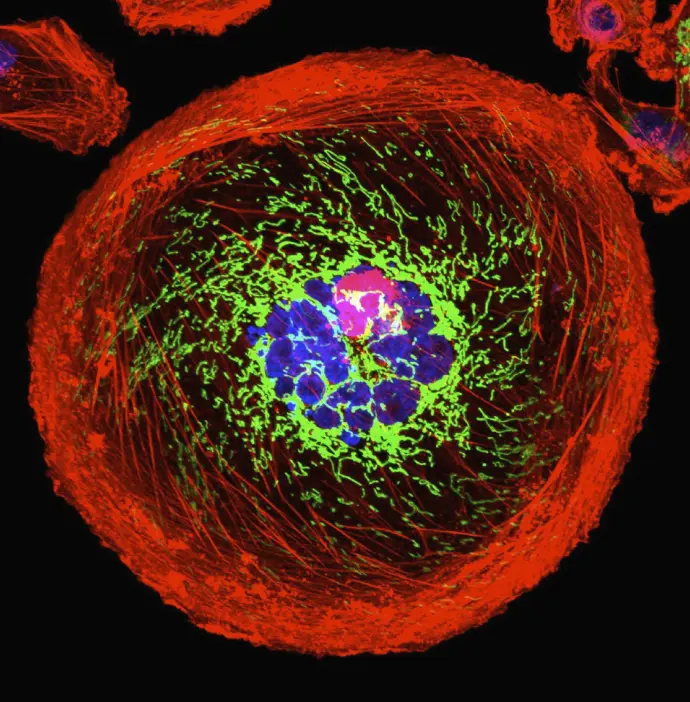
1. Biological Transfection
Biological transfection relies on viral vectors to deliver genetic material into cells. Viruses naturally infect cells, making them highly efficient carriers for nucleic acids. This method is widely used in research and biotechnological applications due to its high transfection efficiency.
- Lentiviruses and Retroviruses
- Adenoviruses
- Adenoviruses associated Viruses (AAVs).
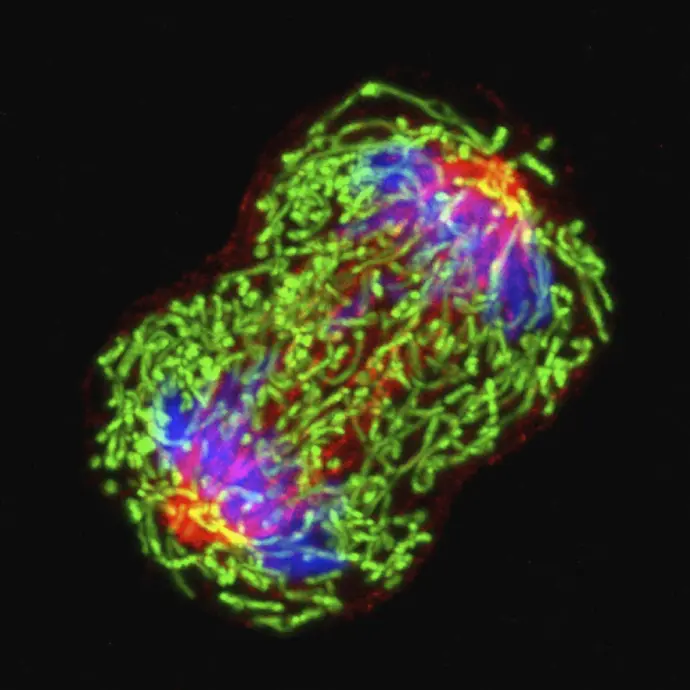
2. Chemical Transfection
Chemical transfection utilizes synthetic or naturally derived compounds to facilitate nucleic acid delivery. These methods are widely used due to their simplicity, scalability, and ability to transfect various cell types.
- Cationic Polymers
- Lipofection (Lipid-Based Transfection)
- Calcium Phosphate Method

3. Physical Transfection
Physical transfection methods involve direct delivery of nucleic acids into cells using physical forces. These approaches are particularly useful for difficult-to-transfect cells and enable precise control over nucleic acid delivery.
- Electroporation
- Microinjection
- Biolistic Transfection (Gene Gun)
- Optical Transfection
1. Biological Transfection: Types, Benefits, and Limitations
Biological transfection methods use viral vectors to introduce genetic material into cells. These methods are highly efficient and commonly used in research and therapeutic applications.
- Lentiviral Transfection
- Integrates genetic material into the host genome, enabling long-term expression.
- Suitable for dividing and non-dividing cells.
- Retroviral Transfection
- Only integrates into dividing cells, leading to stable gene expression.
- Frequently used in gene therapy and research.
- Adenoviral Transfection
- Delivers DNA into cells without integrating into the genome, allowing transient expression.
- Highly effective for short-term studies.
- Adeno-Associated Viral (AAV) Transfection
- Provides efficient gene delivery with low immunogenicity.
- Ideal for long-term gene expression with minimal host genome disruption.
Benefits of Biological Transfection
- High Efficiency: Viruses naturally infect cells, making this method highly effective.
- Stable or Transient Expression: Different viral vectors allow for either short-term or long-term gene expression.
- Broad Applicability: Works in a wide range of cell types, including difficult-to-transfect cells.
Limitations of Biological Transfection
- Biosafety Concerns: Some viral vectors may trigger immune responses or require stringent safety protocols.
- Complex Production: Viral vector preparation is time-consuming and requires specialized facilities.
- Genome Integration Risks: Some viruses integrate into the host genome, potentially causing mutations.
2.Chemical Transfection: Types, Benefits, and Limitations
Chemical transfection methods use synthetic compounds to facilitate the delivery of genetic material into cells. These methods are widely used due to their simplicity, scalability, and adaptability for different cell types.
- Cationic Polymers (e.g., Polyethyleneimine - PEI)
- Bind to negatively charged nucleic acids, forming complexes that interact with cell membranes.
- Used for DNA and RNA delivery with high efficiency.
- Lipid-Based Transfection (Lipofection)
- Uses cationic lipids to form liposomes or lipid nanoparticles that encapsulate nucleic acids.
- Enhances cellular uptake through membrane fusion.
- Calcium Phosphate Transfection
- Forms DNA-calcium phosphate precipitates that cells internalize.
- Cost-effective but less efficient in certain cell types.
- Dendrimers
- Branched macromolecules that efficiently condense and deliver nucleic acids.
- Offer high transfection efficiency with minimal cytotoxicity.
Benefits of Chemical Transfection
- Easy to Use: Simple protocols requiring no specialized equipment.
- Scalable: Suitable for both small-scale and high-throughput applications.
- Non-Viral: Avoids risks associated with viral vectors.
Limitations of Chemical Transfection
- Cytotoxicity: Some chemical reagents may harm cells at high concentrations.
- Lower Efficiency: Generally less effective than viral methods, especially in primary or hard-to-transfect cells.
- Limited Stability: Some complexes degrade quickly, reducing transfection efficiency.
3.Physical Transfection: Types, Benefits, and Limitations
Physical transfection methods use mechanical or physical forces to introduce genetic material into cells. These techniques are particularly useful for hard-to-transfect cells and allow direct nucleic acid delivery without relying on chemical or biological carriers.
- Electroporation
- Uses short electrical pulses to create temporary pores in the cell membrane, allowing nucleic acids to enter.
- Effective for a wide range of cell types, including primary and stem cells.
- Microinjection
- Directly injects nucleic acids into individual cells using a fine glass needle.
- Provides precise control over the amount and location of DNA/RNA delivery.
- Biolistic Transfection (Gene Gun)
- Uses high-pressure gas to propel DNA-coated gold or tungsten particles into cells.
- Commonly used for plant cells and some animal tissues.
- Optical Transfection
- Uses focused laser beams to create temporary pores in the cell membrane, enabling nucleic acid entry.
- A non-invasive technique with minimal damage to surrounding cells.
Benefits of Physical Transfection
- Efficient for Hard-to-Transfect Cells: Works well for primary cells and cell lines resistant to chemical or viral transfection.
- Minimal Reagent Dependency: Avoids cytotoxicity associated with chemical reagents.
- Direct and Controlled Delivery: Some methods allow precise control over the ocation and amount of nucleic acid introduced.
Limitations of Physical Transfection
- Requires Specialized Equipment: Instruments like electroporators, gene guns, or microinjection setups can be expensive.
- Potential Cell Damage: Some methods, like electroporation and biolistics, can cause high cell death rates if not optimized.
- Low Throughput: Techniques like microinjection are time-consuming and not suitable for large-scale applications.
